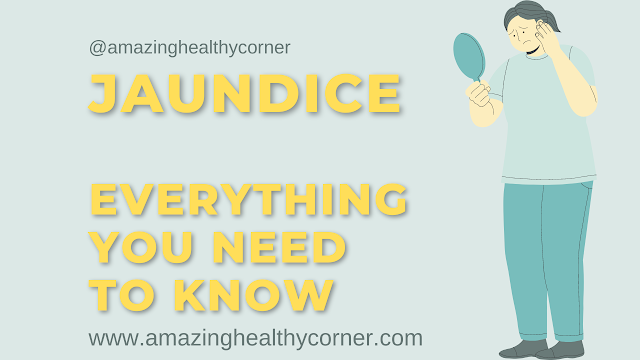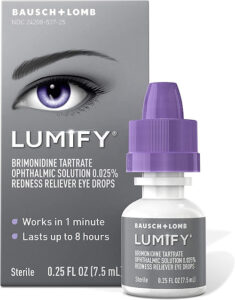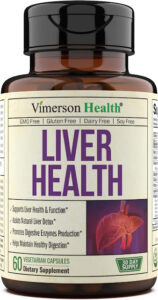The Bizarre Etymology of the Word ‘Jaundice’
The name jaundice, which doesn’t sound the most natural, is derived from the French word jaundice, which means yellowing. The more you know, though, the more illogical the derivation of the term icterus, which comes from the notion that jaundice could previously be treated by gazing at a yellow bird Anyway, as you’ve likely inferred, jaundice is a condition in which a person develops yellow pigments, particularly in the skin and eyes.
Why is jaundice yellow? The answer might surprise you!
A substance called bilirubin, a component of bile and the primary cause of bruises being yellow, is what causes the yellowing pigment. Following its metabolism, bilirubin also causes the yellowness of urine and the brown colour of faeces. Knowing where bilirubin comes from is crucial because it is the main cause of our yellowness. The reticuloendothelial system, also known as the macrophage system, in which the spleen plays the major role but also contains portions of the lymph nodes, is where macrophages consume or phagocytose red blood cells as they approach the end of their lives, which is approximately 120 days. As a result, the haemoglobin in the blood cell is first broken down into heme and globin by the macrophage, and then the globin is further broken down into amino acids.
Why Does Jaundice Happen? Newborns Aren’t the Only Ones Affected
Protoporphyrin, on the other hand, is transformed into unconjugated bilirubin, or UCB, once the heme is broken into iron and protoporphyrin. Unconjugated bilirubin, commonly referred to as indirect bilirubin, is a kind of bilirubin that is lipid-soluble rather than water-soluble. Then, UCB is bound to albumin in the circulation, which carries it to the liver where it is taken up by hepatocytes and converted to a water-soluble form by the enzyme uridine glucuronyl transferase (UGT). The conjugated bilirubin is now secreted from the bile canaliculi into the bile ducts, where it travels to the gallbladder to be stored as bile.
Can Eating Too Many Sweets Give You Jaundice?
Currently, when you consume something like a donut or something similar, your gallbladder secretes bile and CB, which travels down the common bile duct to the duodenum of the small intestine where it is then changed into urobilinogen, or UBG, by intestinal microorganisms in the gut. The brown colour of faeces is caused by the reduction of some of that urobilinogen to stercobilin, which is expelled. However, part of that UBG is in fact recycled when it is reabsorbed into the blood and spontaneously oxidises to form urobilin, the majority of which is transported to the liver and the remainder to the kidneys.
Jaundice: What Causes This Common Condition?
It is then eliminated, which is why urine has a yellow tint. And that’s it—a brief summary of bilirubin metabolism. The result might be a spike in bilirubin levels in the blood, which could be conjugated, unconjugated, or both. For instance, if your liver cells are damaged and can no longer conjugate bilirubin, or if they die and release their bilirubin, this process could be disturbed.
Jaundice: Why Your Skin and Eyes Turn Yellow
The yellow hue of the skin and eyes is explained by this. The typical amount of serum bilirubin needed to give the skin the Simpsons sequel-like yellow tone is 2.5 mg/dL or more. The sclera of the eyes can be used as the first indicator of jaundice and elevated bilirubin levels in the blood. Elastin, which is abundant in scleral tissue and particularly fond of bilirubin and binds it with a high affinity, gives the scleral tissue a yellow hue that frequently appears before the skin. After looking through this process, you could guess that there are quite a number potential roadblocks along the way that could result in jaundice. These are grouped together based on whether the blood contains more UCB, more CB, or more of both.
Jaundice: Two Disorders that Cause Excess Bilirubin in the Blood
Extravascular hemolytic anemias, in which red blood cells are destroyed earlier than they normally would, and ineffective hematopoiesis, in which blood cells don’t form properly in the bone marrow and are destroyed by macrophages, are two disorders that have increased UCB and similar jaundice presentations. High quantities of UCB are produced in both scenarios as a result of the breakdown of red blood cells. Your hepatocytes can become overworked since they can only work so hard converting UCB to CB.
Jaundice: When Too Many Unconjugated Bilirubin Molecules Cause a Problem
Imagine that this liver cell can conjugate a maximum of 10 UCB molecules every minute, but that they often only see 5. That makes the situation simple. The first problem arises if your body suddenly begins to break down more blood cells, increasing the rate of UCB molecules on this cell’s dock to 15/min. If this liver cell is unable to keep up, the extra 5 UCB molecules remain in the circulation. Additionally, as the liver cells reach their maximum capacity, all of this CB enters the bile and raises the risk of coloured bilirubin gallstones. Additionally, all of that CB gets transformed into urobilinogen once it reaches the duodenum. Just keep in mind that some of the urobilinogen gets recycled back into the blood, where it is converted to urobilin and expelled, giving the urine a considerably deeper hue.
Jaundice: Why Newborns Have Yellow Skin
Because it is not water soluble, the UCB is not excreted. Too much UCB was produced in the two cases before, but it is also possible for hepatocytes to simply be unable to work hard enough to keep up. One of these situations is the physiological jaundice of the newborn; after delivery, UCB levels might be high because of the normal process of macrophages destroying foetal red blood cells, and newborn livers have less UGT to convert UCB. Normally, this is normal, but if UCB climbs a LOT, it can lead to difficulties because it is fat soluble and can build up in the brain’s basal ganglia, where it is known as kernicterus, harming the brain or killing the patient.
Jaundice: the bane of new parents’ lives
The most common form of treatment for this illness is phototherapy, which transforms the bilirubin molecule’s structure and arrangement by absorbing the light’s energy. These new shapes can be eliminated in the urine because they are more soluble. This may be an extremely efficient and non-invasive method to remove extra UCB from the blood. Hereditary deficiencies are yet another scenario when insufficient UCB can be conjugated. Gilbert’s syndrome is a condition where the UGT enzyme activity is low and difficult to increase when necessary. As a result, this liver cell may only be able to pump through a maximum of 6 molecules per minute.
What is Jaundice and What Causes It?
Unfortunately, the unconjugated bilirubin burden will grow if something happens that increases hemolysis, such as an illness, stress, or famine. This can easily overwhelm these hepatocytes, produce a buildup of unconjugated bilirubin in the blood, and result in jaundice. Another genetic example is the Crigler-Najjar syndrome, which is usually fatal. Where Gilbert’s syndrome had low levels of UGT, Crigler Najjar is characterised by virtually no UGT and, as a result, no capacity to conjugate UCB. This will result in SUPER high levels of UCB and likely UCB deposits in the brain and kernicterus. Although the preceding two examples emphasised elevated amounts of unconjugated bilirubin in the blood, jaundice can also occur when elevated levels of conjugated bilirubin are present.
The Dubin-Johnson Syndrome: A Deficiency of a Key Protein Leading to Jaundice
Due to a lack of MRP2, a protein that aids in the movement of CB from the liver cell to the bile ducts, people with Dubin-Johnson syndrome have an accumulation of CB in the hepatocyte. Though this transporter transports it into the interstitial space and blood flow rather than the bile canaliculus, so in this situation you’ll have higher CB in the blood, which also gets discharged into the urine, giving it a darker colour. This leakage also causes the liver itself to get extremely dark. Obstructive jaundice, another high-CB form of jaundice, is essentially when something prevents the flow of bile; these obstructions can range from gallstones, pancreatic carcinomas, and cholangiocarcinomas to parasites like the liver fluke.
Jaundice: What it is, and What it Means for Your Health
Bile, which is composed of conjugated bilirubin, literally leaks out through the tight junctions between hepatocytes as a result of this blockage, which also allows bile salts, bile acids, and cholesterol to enter the bloodstream. Bile is made up of conjugated bilirubin, so this blockage essentially causes pressure to rise in the bile duct. If they accumulate on the skin, they may cause pruritus or irritation as well as conditions like hypercholesterolemia and xanthomas. Again, black urine results from the excretion of extra CB in the urine. Additionally, since you’re losing bile, you won’t be able to absorb fat as well, which will result in both (1) a significant increase in the amount of fat you excrete, a condition known as steatorrhea, and (2) a decrease in your ability to absorb the necessary amounts of fat-soluble vitamins.
Jaundice: A Symptom of Viral Hepatitis
Finally, both conjugated and unconjugated bilirubin are produced as a result of viral hepatitis. Hepatocytes line the bile ducts, thus as they die, they allow bile to leak out into the blood, increasing blood CB as well. When hepatocytes become contaminated and begin to die off, they also lose the ability to conjugate bilirubin, generating an excess of UCB in the blood. Again, patients will have darker urine and more CB excreted since CB is higher.









